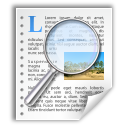Free readability tools to check for Reading Levels, Reading Assessment, and Reading Grade Levels.
[ HOME ] Check Your Readability: Check Text Readability NOW  Free Readability Calculators Learn about Readability Formulas: Dale-Chall Formula Flesch Reading Formula The Fry Graph SPACHE Formula [ View All ] Readability Help: [ View All Articles] Writing Tips: [ View All Articles] English Writing Products: StyleWriter software Site Map About Us Contact Us Write for Us |
The Practical Purposes of Using Readability Formulas The overall purpose of using readability formulas is to obtain "ballpark" estimates of the appropriateness of non-instructional materials for general audiences. After reviewing the history, purposes, and text-based nature of formulas, we intend to offer advice on using alternatives to readability formulas. Our alternatives are more reader-based and, thus, more consistent with current definitions of the reading process.
The scores yielded by readability formulas influence teachers, curriculum committees, librarians, writers, and editors. We use readability scores to find out the grade- level appropriateness of materials, ranging from library books and periodicals, to instructional materials in subjects such as social studies, science, mathematics, health, and reading. At least some of these uses are not suitable. Many authorities in reading and language assert that reading involves interaction between the reader and the text. In fact, reading research supports the commonsense that readers use their knowledge and experience during the comprehension process. That readability formulas are strictly text based does not reflect the interactive nature of the reading process. Popular formulas employ only a syntactic (sentence length) and a semantic factor (vocabulary diversity). Formulas do not directly address factors to communicate of meaning, nor can they discriminate between written discourse and nonsensical combinations of words. Moreover, formulas cannot address reader-related factors — interest, experience, knowledge, and motivation. Readability formulas are objective, quantitative tools for estimating the difficulty of written material without requiring to test the reader. You can assess texts involving a wide range of content and prose styles through readability formulas. Formulas stem from interest in matching reader ability and text difficulty. Educators, such as Lorge (1939) and Dale and Chall (1948), developed formulas to determine if certain grade-level readers could read materials at their grade level. Other formula developers, such as Flesch (1948) and Gunning (1952), worked as writers. They focused on evaluating the writing in progress, to see if it matched the assumed reading skills of an intended audience. The history of readability formulas reveals similarities in their standardization (Klare, 1963) and that some popular formulas may have faulty standards. Stevens (1980) observed that the Lorge and Dale-Chall formulas are based on the McCall-Crabbs Standard Test Lessons in Reading—materials which were not intended for or standardized for this purpose. Dreyer (1984) questioned if the grade level scores related to an acceptable standard of reading competence for a given grade in school. For example, the grade level suggested by the Dale-Chall formula implies that readers should be able to answer one-half to three-fourths of comprehension and vocabulary (Dale and Chall, 1948). Fiftieth percentile comprehension may be slightly acceptable for instructional reading. It is not acceptable for independent reading. Users of any readability formula should know its characteristics—the aspects of reading, such as word and sentence length, it uses in its assessments; the level for which the formula was intended; and especially, the accuracy with which it predicts. The following readability formulas consist of two measurements. To analyze a text, the user selects a small number of sample passages. Each method involves analysis based on a syntactic and a semantic variable. The Spache and the Dale-Chall formulas use sentence length (syntactic variable) and numbers of hard words (semantic variable). The Fry Graph employs sentence length and number of syllables per 100 words. You can use the Spache formula for primary grades only. You can use The Dale-Chall Formula from grade four and up. The Fry Graph estimates readability from grade one through the college level. It is necessary, in using the Dale-Chall and Spache formulas, to count the number of words in the text sample which do not appear on lists of easy words (3000 - Dale-Chall; 1041 - Spache). The difficulty of using these formulas is, therefore, greatly reduced through computer programs which count "hard" words quickly. The Fry Graph, does not need the user to manipulate an equation or to count "hard" words. You only count syllables, sentences in a series of one hundred-word samples, and calculate numbers which you can plot on the graph. It is a convenient method if you must work without the aid of a computer. Formula accuracy should be a central concern of users. The accuracy of the Fry Graph at the primary level is probably not adequate. At that level, it provides, according to Fry (1977), estimates within a year of grade level. At the same level, the Spache formula—designed for use in the primary grades—claims accuracy to within 3.3 months. For materials above the primary level, the accuracy of the Fry Graph is similar to the Dale-Chall Formula. Although the Dale-Chall may consistently overestimate difficulty, the Fry may consistently yield underestimates. Guidry and Knight (1976) have suggested adjustment factors of -0.891 for the Dale-Chall and +0.865 for the Fry. They found, in an analysis of Newbery Award winning books, that subtracting .891 from a Dale-Chall derived readability score or adding .865 to a Fry score yielded truer estimates of text difficulty. Many authorities in literacy and language have noted that no formula yields an exact readability level due to sampling methods. Formulas may yield unreliable estimates when you use small numbers of samples. You can improve readability accuracy when you include samples of the entire text. You should use samples that involve continuous 100 word passages from the beginning to the end of the book or document. Readability formulas are useful tools for obtaining estimates of the difficulty of text, when the intended audience for that text is known only in general terms. For example, librarians, editors, and writers should find formulas valuable when selecting or preparing materials for hypothetical groups such as, "typical" fifth-grade-level readers. However, if you are familiar with the readers' interests, experience, training, knowledge, motivation, and skills—or if you use the materials instructionally—the value of readability formulas is diminished. About Readability >> READABILITY FORMULAS New Dale-Chall - Flesch Reading Ease - Flesch Grade Level - Fry Graph -Gunning FOG - Powers-Sumner- Kearl - SMOG - FORCAST - Spache  StyleWriter software: use it to write better content! Download your free trial! |
|
|
||